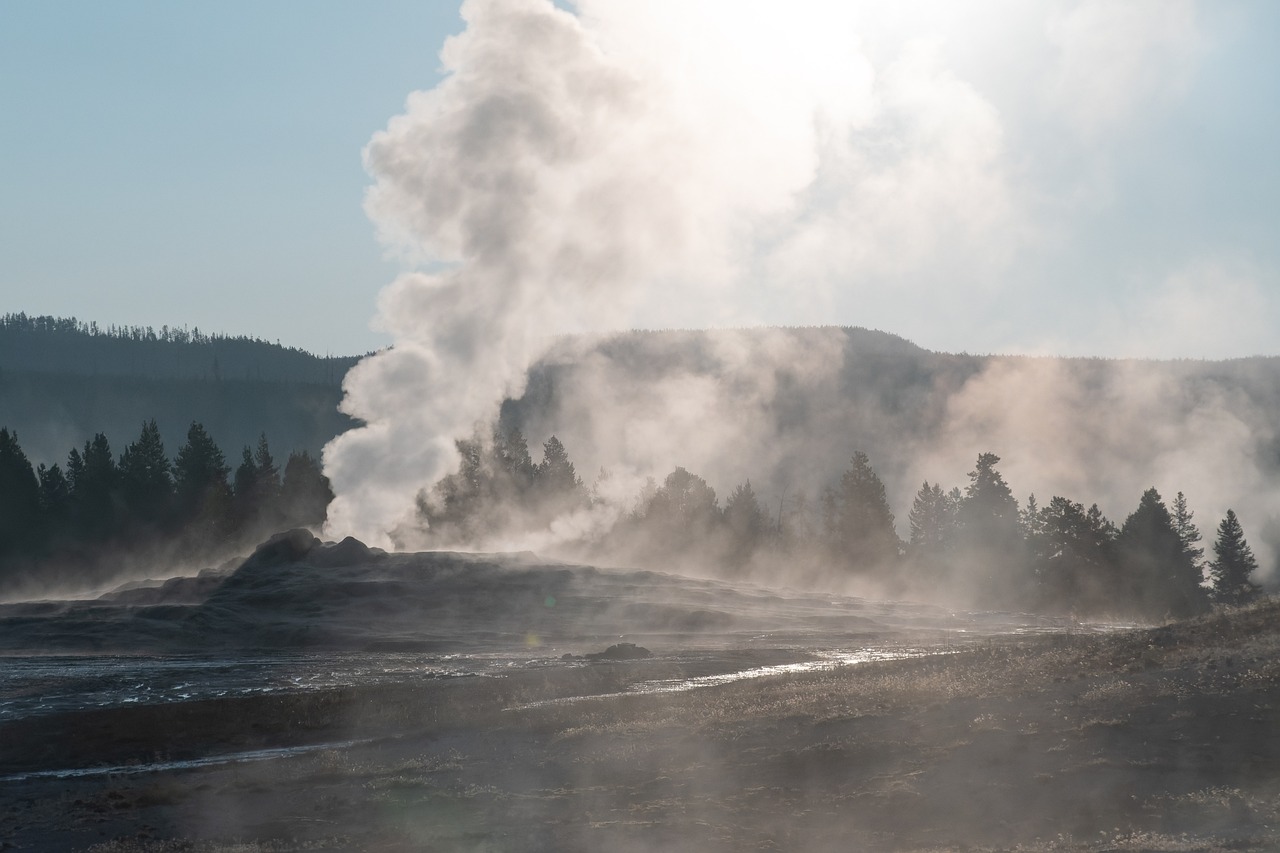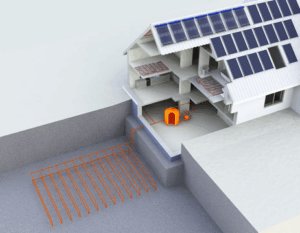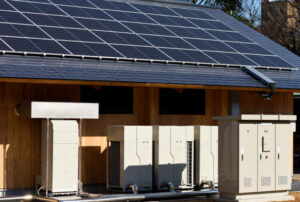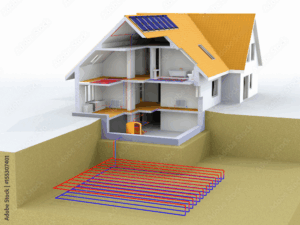When you think of geothermal energy, you might picture hot springs or maybe the bubbling geysers of Yellowstone. But here’s the truth—geothermal energy is doing way more behind the scenes than most people realize. It’s clean, it’s powerful, and it’s one of the most underrated renewable resources out there.
Let’s break down what geothermal energy really is, how it works, and the surprising ways it’s being used in homes, businesses, and even entire cities.
What Exactly Is Geothermal Energy?
At its core, geothermal energy comes from the natural heat stored beneath the Earth’s surface. It’s generated by the slow decay of radioactive particles in the planet’s core, producing temperatures hot enough to melt rock. Luckily, we don’t need to drill that deep to access it. Just a few miles underground, the heat can be tapped and used in various forms.
And because the Earth keeps producing this heat, geothermal is considered a renewable and sustainable energy source—one that doesn’t depend on the sun shining or the wind blowing.
1. Residential Heating and Cooling (Ground Source Heat Pumps)
One of the most common uses of geothermal energy—and one that we specialize in at Envirotech Geothermal—is geothermal heat pumps for homes.
Here’s how it works:
- Pipes are buried underground, where temperatures stay stable year-round.
- A heat pump moves heat into your home during winter and pulls it out in summer.
- The result? Consistent, energy-efficient comfort without relying on fossil fuels.
Why homeowners love it:
- Big savings on energy bills
- Quiet operation
- Low maintenance
- Long lifespan (25–50 years for the underground loop)
2. Commercial and Industrial Applications
It’s not just homes that are going green with geothermal. Businesses, schools, and large industrial buildings are also making the switch. The technology is essentially the same—just on a bigger scale.
Common uses:
- Heating and cooling office buildings, hospitals, and schools
- Climate control in greenhouses
- Process heat for manufacturing
For businesses, geothermal means lower operating costs, reduced carbon footprints, and fewer long-term maintenance issues.
3. Geothermal Power Generation
This is where geothermal energy really flexes its muscles. In certain regions with high underground temperatures, geothermal power plants can convert heat directly into electricity.
How it works:
- Hot water or steam from underground reservoirs is brought to the surface.
- The steam spins a turbine, which drives a generator.
- Electricity is produced and sent to the grid.
Countries like Iceland, the Philippines, and parts of the western U.S. are already generating significant portions of their electricity from geothermal sources.
Pros of geothermal power plants:
- Constant energy supply (unlike solar or wind)
- Minimal land use compared to other renewables
- Very low emissions
4. Agricultural Uses
Geothermal isn’t just for buildings—it’s also transforming how we grow food. In cold climates, farmers are using geothermal energy to keep greenhouses warm year-round.
Other agricultural uses:
- Drying crops with geothermal-heated air
- Heating fish farms (aquaculture)
- Sterilizing soil with geothermal steam
It’s a practical, sustainable way to boost food production without increasing fossil fuel use.
5. Hot Water Supply
In some areas, geothermal energy is used to provide direct hot water to homes, businesses, and spas. This is especially common in places like Iceland and New Zealand, where hot water naturally rises close to the surface.
Everyday uses include:
- Bathing and cleaning
- Heated sidewalks (to melt snow and ice)
- Spa resorts and therapeutic baths
It’s luxury meets sustainability.
6. District Heating Systems
Imagine heating not just one building—but an entire neighborhood—with geothermal energy. That’s what district heating systems do.
How it works:
- A central geothermal system generates heat.
- Hot water or steam is piped to multiple buildings.
- Everyone taps into the same clean energy source.
This is growing in popularity across Europe and select U.S. cities, offering a scalable, cost-effective alternative to traditional heating systems.
7. Snow Melting and Ice Prevention
Yep, geothermal energy can even help you avoid shoveling snow. In colder climates, geothermal systems are used to melt snow and ice on sidewalks, driveways, parking lots, and even airport runways.
Benefits:
- Safer, slip-free surfaces
- No need for salt or chemicals
- Automatic operation—no button-pushing needed
It’s a smart solution that blends comfort and safety.
8. Spa and Recreational Use
Okay, this one’s a bit more relaxing. Geothermal springs have been used for centuries for their health and wellness benefits. Today, many resorts and spas tap into naturally heated water for thermal pools, baths, and hot tubs.
Why it matters:
- Low operating costs for heating water
- Eco-friendly attraction for tourists
- Year-round comfort—even in snowy regions
Why Geothermal Energy Stands Out
Unlike other renewable energy sources, geothermal is always available. No waiting for sun or wind—just consistent, steady power that works day or night, rain or shine. It also has one of the smallest carbon footprints of any energy source and often requires less land than solar or wind farms.
Plus, once installed, geothermal systems are incredibly low-maintenance and long-lasting.
Is Geothermal Energy Right for You?
If you’re looking for:
- Lower energy bills
- Reduced environmental impact
- Long-term reliability
- Quiet, clean operation
…then geothermal energy might be exactly what you need. Whether you’re building a new home or upgrading an existing one, systems like geothermal heat pumps can completely change how you think about comfort and energy use.
Conclusion: A Powerful Solution Hiding Beneath Our Feet
Geothermal energy might not get as much media buzz as solar or wind, but it’s just as powerful—if not more in some cases. From heating and cooling homes to generating electricity and growing food, geothermal offers a reliable, renewable solution to many of today’s energy challenges.
At Envirotech Geothermal, we specialize in harnessing this incredible resource for homeowners and businesses across the region. If you’re curious about how geothermal could work for your property, reach out today. Let’s explore what’s possible—because the future of energy might just be under your feet.



